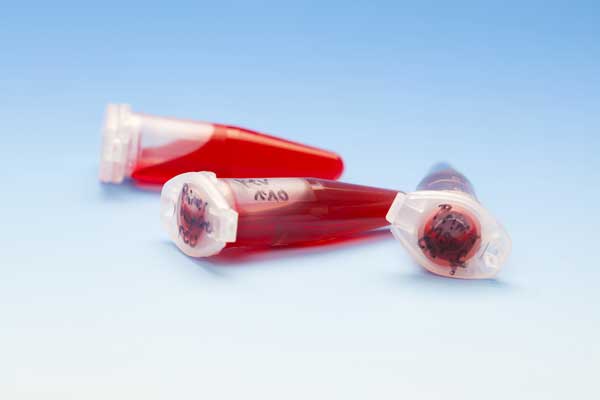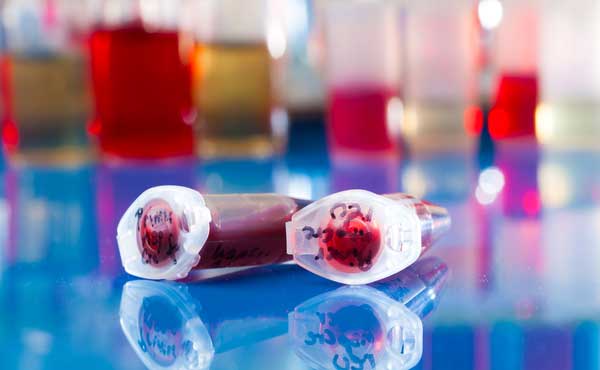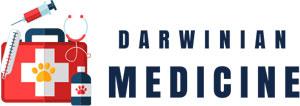Stem cell research and therapy have been surrounded by controversy, hope, and skepticism since their discovery. Stem cells offer enormous potential for treating injuries, diseases, and growing tissues and organs. However, the development of stem cell treatments has faced ethical dilemmas, safety concerns, and clashes between scientists and clinics offering unproven therapies. This article will explore the origins of stem cells, their therapeutic promise, and the ongoing debate around their use in medicine.
The term “stem cell” was first coined in 1868 by biologist Ernst Haeckel, a prominent supporter of Charles Darwin’s theory of evolution. Haeckel proposed that all organisms evolve from a common ancestor and that every cell in the body arises from a single primordial “stem cell.” The pioneering research that confirmed this idea came almost a century later. In the 1960s, James Till and Ernest McCulloch identified stem cells in bone marrow that generate all blood cell types. This landmark finding introduced the concept of adult stem cells that self-renew and give rise to differentiated daughter cells.

In 1998, James Thomson isolated the first embryonic stem cells from human blastocysts. Unlike adult stem cells that generate a limited range of cell types, embryonic stem cells are pluripotent – able to generate every cell in the body. This discovery ignited controversy as extracting these cells destroys the embryo, raising ethical concerns. In 2001, President George W. Bush banned federal funding for new embryonic stem cell lines. Scientists thus sought alternative ways to create pluripotent stem cells, leading to Shinya Yamanaka’s Nobel Prize-winning discovery of induced pluripotent stem cells (iPSCs) in 2006. Despite reversed restrictions under President Obama, ethical issues continue around embryonic stem cell research.
The isolation of pluripotent stem cells opened exciting possibilities for regenerative medicine. Stem cells could potentially restore damaged tissues by replacing lost cells. This led to clinics offering unproven stem cell therapies, often involving international travel known as “stem cell tourism.” Patients seek treatments for conditions like arthritis, multiple sclerosis, spinal cord injuries, and neurodegenerative diseases. However, the safety and efficacy of these treatments remain unconfirmed. The FDA has only approved hematopoietic stem cells from bone marrow and peripheral blood for certain cancers and disorders. All other stem cell therapies are still experimental.
Proponents of commercial stem cell clinics argue that patients have the right to try unproven treatments and point to positive testimonials. Critics counter that these clinics often exaggerate benefits and downplay risks. Documented cases show serious adverse effects like tumors derived from injected cells. The clinics also lack scientific transparency, rarely providing data from controlled clinical trials required for traditional drug development. This disagreement between regulators and clinics came to a head recently around how cultured stem cells should be classified. The FDA now considers more than “minimally manipulated” cells to be drugs requiring approval. However, clinics contend that cells isolated from patients are medical procedures that they can administer at their own discretion.
This controversy reveals unresolved questions about the safety of current stem cell therapies. Pluripotent stem cells can generate any cell type, but it is difficult to control their specific differentiation after injection into the body. Signals from surrounding cells and tissues strongly influence their fate, emphasizing the importance of their native microenvironment. Removing stem cells from this niche and expanding them in the lab alters their properties. There are also concerns whether clinics adequately characterize harvested cells to confirm their stem cell identity. Overall, experts argue that stem cell treatments remain highly experimental. While research continues, patients should carefully weigh potential benefits against risks.
Despite cautions, stem cell science holds tremendous potential. Researchers are developing innovative ways to guide stem cell differentiation and integrate them with surrounding tissues. Scaffolds and 3D culture systems aim to recapitulate native stem cell niches. Combining stem cells with gene editing approaches like CRISPR may someday allow personalized cell therapies. While debates persist around ethics and regulation, scientists maintain hope that stem cells will transform regenerative medicine. However, this monumental goal requires rigorous research to ensure these remarkable cells heal safely and effectively.

Introduction to Stem Cells
Stem cells have been surrounded by controversy and hope since their discovery. These remarkable cells can self-renew and develop into many different cell types in the body. This plasticity gives stem cells enormous potential for regenerating tissues damaged by injury or disease. However, developing stem cell therapies has also faced major ethical concerns and safety questions. As stem cells advance towards clinical use, clashes have erupted around regulating their medical applications. This article will explore the origins of stem cells, their promise in regenerative medicine, and the ongoing debate over unproven treatments offered by commercial clinics.
The Origins of Stem Cells
The fundamental concept of stem cells arose in 19th century Germany, decades before their existence was confirmed experimentally. In 1868, biologist Ernst Haeckel, a prominent supporter of Charles Darwin’s theory of evolution, first proposed the idea of a “stem cell.” Haeckel suggested that all organisms evolve from a common ancestor and that every cell in the body arises from a single primordial cell, which he called the stem cell.
Over the next century, pioneering research eventually verified Haeckel’s visionary idea. In the 1960s, Canadian scientists James Till and Ernest McCulloch identified stem cells in bone marrow that generate all the cell types found in blood. This discovery of “hematopoietic” stem cells provided the first conclusive evidence for stem cells in adult tissues that self-renew and give rise to differentiated daughter cells.
In 1998, University of Wisconsin scientist James Thomson isolated the first embryonic stem cells from human blastocysts produced via in vitro fertilization. Unlike adult stem cells that generate a limited range of cell types, embryonic stem cells are “pluripotent” – able to develop into every cell in the body. This extraordinary advance ignited controversy, as deriving embryonic stem cells destroys the embryo.
The Controversy Over Embryonic Stem Cells
The isolation of human embryonic stem cells immediately raised ethical concerns, culminating in a high-profile political clash. Critics argued that destroying embryos ending potential human life was immoral. In 2001, President George W. Bush banned federal funding for new embryonic stem cell lines.
Seeking alternative paths, scientists found ways to “reprogram” mature cells into pluripotent stem cells without embryos. In 2006, Shinya Yamanaka pioneered induced pluripotent stem cells (iPSCs) by reprogramming adult skin cells to a pluripotent state. This breakthrough allowed the generation of versatile stem cells without the destruction of embryos. Despite ongoing debates, President Obama lifted federal restrictions on embryonic stem cell funding in 2009.
The Promise and Controversy of Stem Cell Therapies
The discovery of pluripotent stem cells opened exciting possibilities for regenerative medicine. Stem cells could potentially replace damaged or destroyed cells, restoring injured tissues. This led to a proliferation of clinics offering unproven stem cell treatments, often provided in countries with less stringent regulations. However, experts have raised serious concerns about the safety and efficacy of these therapies.
Proponents point to remarkable recoveries and testimonials from high-profile celebrities and athletes. However, critics argue these clinics exaggerate benefits while downplaying risks. Rigorous scientific data is lacking, as most therapies have not undergone clinical trials required for traditional drug development. Documented cases show significant adverse effects like tumors derived from injected cells.
This disagreement between regulators and clinics providing unapproved stem cell therapies came to a head recently. The FDA now categorizes more than “minimally manipulated” cells as drugs requiring approval. But clinics argue that cells isolated from patients are medical procedures that they can administer independently. Behind this controversy lies unresolved questions about the level of risk patients may face.
Uncertainties and Concerns About Current Stem Cell Therapies
While stem cells offer incredible potential, experts argue their therapeutic use remains highly experimental. A key concern is controlling stem cell behavior after injection into the body. Their fate is strongly directed by complex molecular signals and interactions with surrounding cells that are disrupted when stem cells are isolated and expanded in the lab.
For example, mesenchymal stem cells can differentiate into bone, cartilage, fat, and other cell types. After injection into the eye, how can bone cell formation be prevented? Recapitulating the native niche by integrating stem cells with biomaterials and 3D culture systems aims to address this challenge. Proper stem cell characterization by clinics also requires scrutiny to avoid potential adverse outcomes.
Ongoing Potential Amid Controversy
Rigorous research continues to realize the monumental promise of stem cells for regenerative medicine. Recent advances are unraveling how to guide stem cell differentiation and integration with host tissues. Combining stem cells with gene editing approaches like CRISPR may enable personalized cell therapies. While vigorous ethical debates persist, scientists maintain hope that stem cells will someday revolutionize the treatment of injuries, diseases, and tissue damage. However, ensuring safety while translating these remarkable cells from the lab into clinical practice remains a complex challenge requiring intense investigation.
Conclusion
Since their origins in 19th century biology, stem cells have been surrounded by a mix of controversy and hope. Their ability to self-renew and generate many cell types offers enormous potential for healing damaged tissues. However, developing stem cell therapies has faced major roadblocks around ethics, politics, and safety. As this field continues advancing, navigating the uncertainties around stem cells in the clinic will require open communication, transparency, and careful research to ensure these miraculous cells can heal without harm.
